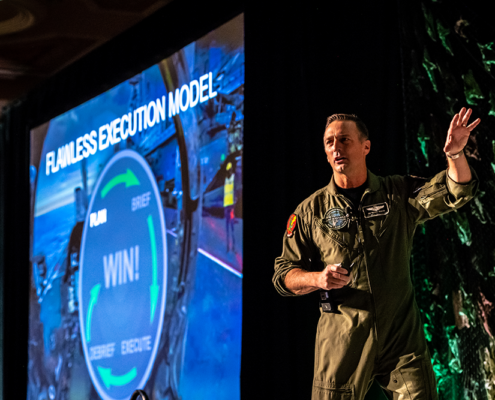 https://www.afterburner.com/wp-content/uploads/2024/09/the-execution-gap-afterburner.jpg
1080
1920
Nate Riggins
/wp-content/uploads/2024/07/Afterburner-Logo-Resize-Fullcolor-300x93.png
Nate Riggins2024-01-08 16:24:542024-11-21 14:56:38Closing the Execution Gap: Transforming Meetings and Strategies
https://www.afterburner.com/wp-content/uploads/2024/09/the-execution-gap-afterburner.jpg
1080
1920
Nate Riggins
/wp-content/uploads/2024/07/Afterburner-Logo-Resize-Fullcolor-300x93.png
Nate Riggins2024-01-08 16:24:542024-11-21 14:56:38Closing the Execution Gap: Transforming Meetings and Strategies
Before you can set long-term goals, it’s important to have a clear vision of where you want your business to be three, five, and ten years from now. In order to get to this point, we like to use what we call the High Definition Destination (HDD). We define your HDD as a vivid picture of your business’ processes, values, and organizational structure that will help aid in setting defined business goals that will produce the results you’re looking for.
Here are 12 things to take into consideration when aligning your business goals with your High Definition Destination:
- Financial Position. Your finances play a huge part in the growth and delegation of resources within your business. Where would you like your business to be in three to five years? Will you measure your financial position in earnings, revenue, or internal rate of return?
- Market Position. At some point in your life, you learn whether you were born a leader or a follower. When it comes to your business, it’s important to decide early on if you’re going to lead the market or let the market lead you.
- Business Areas. What areas of business do you intend to be in? Will you be selling commodity products? Or do you have something that is highly differentiated?
- Innovation. Similar to market position, you’ll have to decide if you’re going to be an innovator or use off-the-shelf technologies. Will research and development be an integral part of your business’ future? Or will you invest money elsewhere?
- Insider Perception. Nothing is as important as the perception of your business from the people who are most invested – employees and investors. What is the insider view of the company? How do your stakeholders view the company? Do your employees enjoy working there?
- Outsider Perception. How do you want people to view your business? Do you want them to associate your brand with terms like growing and profitable? Or innovative and customer-oriented?
- Workforce Characteristics. What types of skills and abilities will your workforce have? Will they have special talents that help differentiate them from your competitor’s workforce?
- Brand: Yes or No. Are you going to have a branded product or a commodity product? Will you be an original equipment manufacturer to another company?
- Corporate Culture. Culture is arguably one of the most important components of a business both internally and externally. What is your vision for your company culture? How do you want potential employees and consumers to view you?
- Corporate Citizenship. How, if at all, do you plan on making an impact on the community around you? Do you plan on donating to charities? Or volunteering in programs that help people around the world? Why?
- Ownership. How do you plan on facilitating ownership within your business? Will your company be public, private, or have an employee stock plan?
- Incentive Philosophy. Incentives can be a beautiful thing in business if used correctly. What will your incentive plans be based on? Straight pay, shared risk, or rewards based on results?
When determining your long-term business goals and objectives, utilizing these 12 key descriptors will help you to paint a detailed picture of the company’s future. The more strategic planning and insight you can get into your business model, the more equipped you’ll be to face any obstacles your business comes across.
If you’re not quite sure how these descriptors fit into your business, reach out to us here. Our consultants at Afterburner will help your team plan a road map for success unique to your business’ long-term goals.
Share This Post
More Like This
 https://www.afterburner.com/wp-content/uploads/2024/09/the-execution-gap-afterburner.jpg
1080
1920
Nate Riggins
/wp-content/uploads/2024/07/Afterburner-Logo-Resize-Fullcolor-300x93.png
Nate Riggins2024-01-08 16:24:542024-11-21 14:56:38Closing the Execution Gap: Transforming Meetings and Strategies
https://www.afterburner.com/wp-content/uploads/2024/09/the-execution-gap-afterburner.jpg
1080
1920
Nate Riggins
/wp-content/uploads/2024/07/Afterburner-Logo-Resize-Fullcolor-300x93.png
Nate Riggins2024-01-08 16:24:542024-11-21 14:56:38Closing the Execution Gap: Transforming Meetings and Strategies https://www.afterburner.com/wp-content/uploads/2024/09/Group_Meeting_2-1.jpeg
1707
2560
Nate Riggins
/wp-content/uploads/2024/07/Afterburner-Logo-Resize-Fullcolor-300x93.png
Nate Riggins2024-01-02 18:26:092024-11-21 14:56:39Fueling Business Agility: The Strategic Pivot
https://www.afterburner.com/wp-content/uploads/2024/09/Group_Meeting_2-1.jpeg
1707
2560
Nate Riggins
/wp-content/uploads/2024/07/Afterburner-Logo-Resize-Fullcolor-300x93.png
Nate Riggins2024-01-02 18:26:092024-11-21 14:56:39Fueling Business Agility: The Strategic Pivot https://www.afterburner.com/wp-content/uploads/2024/09/Christian-_Boo_-Boucousis-on-stage-1.jpeg
1066
1600
Nate Riggins
/wp-content/uploads/2024/07/Afterburner-Logo-Resize-Fullcolor-300x93.png
Nate Riggins2024-01-01 17:03:122024-11-21 14:56:40How to Pick the Right Guest Speaker for Your Event
https://www.afterburner.com/wp-content/uploads/2024/09/Christian-_Boo_-Boucousis-on-stage-1.jpeg
1066
1600
Nate Riggins
/wp-content/uploads/2024/07/Afterburner-Logo-Resize-Fullcolor-300x93.png
Nate Riggins2024-01-01 17:03:122024-11-21 14:56:40How to Pick the Right Guest Speaker for Your Event https://www.afterburner.com/wp-content/uploads/2024/09/Presentation_2-1-scaled-1.jpg
1793
2560
Nate Riggins
/wp-content/uploads/2024/07/Afterburner-Logo-Resize-Fullcolor-300x93.png
Nate Riggins2022-10-26 19:08:222024-11-21 14:56:46Your Action Plan for Closing Critical End-of-Year Opportunities
https://www.afterburner.com/wp-content/uploads/2024/09/Presentation_2-1-scaled-1.jpg
1793
2560
Nate Riggins
/wp-content/uploads/2024/07/Afterburner-Logo-Resize-Fullcolor-300x93.png
Nate Riggins2022-10-26 19:08:222024-11-21 14:56:46Your Action Plan for Closing Critical End-of-Year Opportunities
The Best End-of-Quarter Use of Technology in Business
Business Culture, Goal Execution, Strategic Planning https://www.afterburner.com/wp-content/uploads/2024/09/[email protected]
596
1060
Nate Riggins
/wp-content/uploads/2024/07/Afterburner-Logo-Resize-Fullcolor-300x93.png
Nate Riggins2020-08-14 18:52:432024-11-21 14:56:49Reimagine Your Strategic Alliances in 2020
https://www.afterburner.com/wp-content/uploads/2024/09/[email protected]
596
1060
Nate Riggins
/wp-content/uploads/2024/07/Afterburner-Logo-Resize-Fullcolor-300x93.png
Nate Riggins2020-08-14 18:52:432024-11-21 14:56:49Reimagine Your Strategic Alliances in 2020 https://www.afterburner.com/wp-content/uploads/2024/09/Virtual-planning.jpeg
700
1050
Nate Riggins
/wp-content/uploads/2024/07/Afterburner-Logo-Resize-Fullcolor-300x93.png
Nate Riggins2020-04-21 09:00:182024-11-21 14:56:50Why Preparing for the Unexpected is Essential
https://www.afterburner.com/wp-content/uploads/2024/09/Virtual-planning.jpeg
700
1050
Nate Riggins
/wp-content/uploads/2024/07/Afterburner-Logo-Resize-Fullcolor-300x93.png
Nate Riggins2020-04-21 09:00:182024-11-21 14:56:50Why Preparing for the Unexpected is Essential https://www.afterburner.com/wp-content/uploads/2024/09/Annual-Strategic-Planning-Session_14505b37fc.jpeg
1708
2560
Nate Riggins
/wp-content/uploads/2024/07/Afterburner-Logo-Resize-Fullcolor-300x93.png
Nate Riggins2019-08-30 01:39:202024-11-21 14:56:52Why Your Annual Strategic Plan Will Fail
https://www.afterburner.com/wp-content/uploads/2024/09/Annual-Strategic-Planning-Session_14505b37fc.jpeg
1708
2560
Nate Riggins
/wp-content/uploads/2024/07/Afterburner-Logo-Resize-Fullcolor-300x93.png
Nate Riggins2019-08-30 01:39:202024-11-21 14:56:52Why Your Annual Strategic Plan Will Fail https://www.afterburner.com/wp-content/uploads/2024/09/man-explaining-red-teaming-in-front-of-projector-1.png
667
1000
Nate Riggins
/wp-content/uploads/2024/07/Afterburner-Logo-Resize-Fullcolor-300x93.png
Nate Riggins2019-06-05 09:00:232024-11-21 14:56:52The Benefits of Red Teaming
https://www.afterburner.com/wp-content/uploads/2024/09/man-explaining-red-teaming-in-front-of-projector-1.png
667
1000
Nate Riggins
/wp-content/uploads/2024/07/Afterburner-Logo-Resize-Fullcolor-300x93.png
Nate Riggins2019-06-05 09:00:232024-11-21 14:56:52The Benefits of Red TeamingAbout Us
Building Strong Teams Through the Guidance of Fighter Pilot Keynote Speakers.

